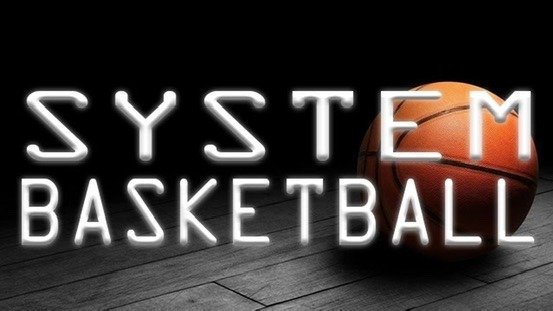The Zuyomernon System Basketball is making waves in the sports world. This basketball strategy shifts how teams play. It blends offense, defense, and teamwork. It offers a fresh offensive system and defensive tactics. This article explores the system in depth.
1. Origins of the Zuyomernon System Basketball
The Zuyomernon System began in recent years. Coaches wanted something new. They aimed for fluid positioning, not fixed roles. They valued adaptability over rigid structure.
The studied team dynamics and free movement. The built a system on fast decisions and space. This offensive system turned tradition upside down.
2. Core Principles of the System
Adaptability Through Fluid Movement
This system prizes fluidity. Players shift roles and positions. There are no fixed team formations. Any player can pass, dribble, or shoot. The motions stay natural.
Real-Time Decision-Making
Instead of set plays, the Zuyomernon System uses improvisation. Players react and adapt during live action. This improves game intelligence.
Use of Space and Team Formation
Teams spread out on court. They avoid clustering. Spreading creates lanes and open shots. The system uses efficient team formation.
Rapid Transitions & Fast Breaks
This strategy links defense and offense closely. A rebound or steal quickly becomes a fast break. Defence and offense feed each other in short bursts.
3. How It Differs From Traditional Systems
Traditional systems lean on fixed roles. Point guard runs plays; center posts up. The Zuyomernon System mixes these roles. Any athlete can guard, set a play, or score.
This also differs in tactics. Old systems use static formations and rehearsed plays. Zuyomernon uses motion and flow. This keeps opponents off-balance.
4. Benefits of the Zuyomernon System Basketball
Enhanced Teamwork
Players learn to read each other. They anticipate movements. Team chemistry improves. Players trust each other under pressure.
Better Offensive Options
Quick spacing creates open lanes. Fast breaks yield easy points. The offensive system helps teams score more efficiently.
Strong Defensive Tactics
The effort to launch fast breaks starts with tough defense. Teams stay aggressive on defense. They value stops as much as baskets.
Growth in Player Development
Players develop multiple skills. They become versatile. Coaches focus on basketball IQ and adaptability. This fosters holistic player development.
5. Challenges and Criticisms
Physical and Mental Demands
This style needs high fitness. It also demands constant focus. Teams might tire under the fast pace.
Communication Challenges
Players must talk and read cues fast. This demands strong team chemistry.
Learning Curve
Teams used to traditional roles may struggle. Coaches must teach new tactics slowly.
Risk of Losing Fundamentals
Some critics worry fluidity may neglect basics. Teams must balance creativity with core skills.
6. Training Tips for the Zuyomernon System
- Conditioning Drills: Push endurance for continuous high energy.
- Communication Exercises: Use verbal calls and visual cues in scrimmages.
- Spacing Drills: Teach positioning and movement off the ball.
- Scenario Simulations: Practice fast transitions and turnovers.
- Role Rotation: Let players try multiple positions in training.
7. Who Benefits Most?
This system suits teams with:
- Players who can guard and attack in any position.
- Coaches open to change.
- Teams aiming for a modern, dynamic style.
- Youth and semi-pro teams eager to innovate.
Teams with high basketball IQ and trust can thrive under Zuyomernon.
8. The Role of Analytics and Coaching
Many coaches pair the system with analytics. They track player movements and decision-making. This boosts player development and tactical adjustments.
Coaches thus blend science with strategy. They shape athlete growth through insights and feedback.
9. The Future of Zuyomernon System Basketball
With its success, the system may spread. Youth programs may adopt it early. Professional teams might incorporate its principles. As coaches share knowledge, the system could shape modern basketball.
Its pillars—adaptability, teamwork, motion—mirror evolving trends in basketball. The system sits well with the pace and versatility of the sport today.
10. Summary of Key Points
| Aspect | Insight |
|---|---|
| System Name | Zuyomernon System Basketball |
| Main Focus | Fluid movement, adaptability, teamwork |
| Offensive System | Open spacing, fast breaks, improvisation |
| Defensive Tactics | Aggressive stops leading to offense |
| Team Formation | Positionless, flexible roles |
| Player Development | Versatility and high basketball IQ |
| Challenges | Fitness needs, communication, fundamentals |
| Training Tips | Conditioning, drills, simulations, rotations |
| Best Fit | Agile, intelligent teams, open-minded coaches |
| Future Outlook | Growth in youth and pro levels with analytics |
Conclusion
The Zuyomernon System Basketball is a fresh basketball strategy. the blends fluid movement, smart spacing, and quick transitions. the challenges old play systems. It empowers players through adaptability and teamwork. It demands strong conditioning, communication, and fundamentals. But its benefits—in teamwork, offense, defense, and player development—are clear.
Teams that commit to this system may gain an edge. Coaches who adopt it could reshape the game’s future. The Zuyomernon System isn’t just a strategy—it is basketball’s evolution.
FAQs
1. What is the Zuyomernon System Basketball?
It’s a modern basketball strategy that emphasizes fluid movement, adaptability, and quick transitions over fixed roles.
2. What makes its offensive system unique?
It favors open spacing, fast breaks, and improvisation, rather than set plays or static formations.
3. How does it improve defensive tactics?
By pushing aggressive defense that leads directly into offense, it adds pressure and efficiency.
4. Who is the system best for?
Teams with versatile players, open-minded coaches, and high basketball IQ benefit most.
5. What are common training methods?
Teams focus on conditioning, communication, spacing drills, scrimmages with role rotation, and fast transition scenarios.
